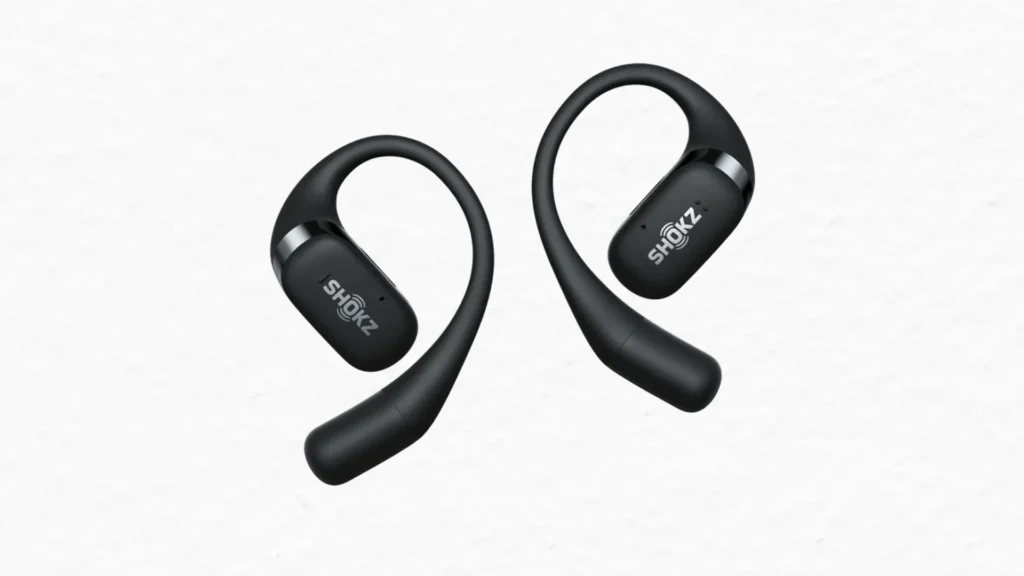What if a handheld console could beat your laptop at running PC games? That is no longer a dream. A new wave of portable consoles has entered the market, and they are faster, smoother, and more powerful than many laptops people use today. Gamers who want both performance and mobility are now paying close attention.
Laptops have long been the go-to choice for portable PC gaming. But high-performance laptops are heavy, expensive, and drain battery fast. Portable consoles change that equation. They are small, but their hardware is designed for gaming first, not for office tasks.
This means you get higher frame rates in games, quieter cooling, and longer playtime away from an outlet. That makes them a smarter option for players who want freedom without losing performance. And here comes the twist: some of these consoles are beating mid-range and high-end laptops in direct tests.
The Shift in Gaming
Portable gaming used to mean compromise. You got simple graphics, short play sessions, and games made only for handhelds. True PC games were locked to desktops or bulky laptops. Players had to choose between freedom and performance.
That choice is now fading. Handheld consoles can launch massive PC games that once demanded a desk setup. Titles that once crashed small devices now run smoothly in the palm of your hand. The line between handheld and full PC has blurred.
Gamers are not ignoring this change. Social platforms are full of side-by-side comparisons showing handhelds beating laptops. Reviewers test demanding titles, and the results surprise viewers every time. Communities are spreading the word that this is not a gimmick—it is a real replacement.
The impact is showing in habits. Players report they spend more hours on their handhelds than on gaming laptops. The reason is not just performance but comfort. You grab the console, turn it on, and start playing within seconds. That speed makes it addictive to use.
The progress comes from better hardware design. Portable consoles now ship with chips that are custom-built for gaming. These processors balance speed and efficiency so no watt is wasted. That lets the console stay small while still pushing big performance.
Storage has advanced too. Solid-state drives are standard in handhelds, and they load games almost instantly. Waiting through long load times feels outdated once you see how fast a console boots. This makes portable gaming feel as smooth as using a powerful desktop.
Displays have also improved. Handhelds now include sharp screens with high refresh rates. Movements look clean, and colors stand out. Playing on one feels more immersive than gaming on many laptops with cheaper panels.
Battery life was once the biggest weakness. Early devices overheated or drained in under an hour. New models are smarter, shifting power based on what you are doing. This makes the same device last through travel, work breaks, and gaming sessions without constant charging.
What Laptops Get Wrong
Laptops struggle because they are built for many jobs. They must handle browsing, video calls, office apps, and movies. That wide focus means less tuning for gaming. As a result, the hardware is not fully optimized for long play.
Cooling is another problem. Laptops pack strong parts into thin frames, which trap heat. Fans run loud, batteries drain fast, and performance dips under pressure. Gamers feel this when frame rates drop in the middle of a session.
Portable consoles are different. They focus only on games. Cooling systems are placed with one job in mind—keeping the game running smooth. That is why performance per watt is higher, and why handhelds often feel more stable.
This focus also helps with comfort. Laptops demand extra gear like a mouse for serious play. Consoles need nothing more than their built-in controls. With less heat, better design, and smarter power use, handhelds are proving they are not just portable—they are efficient gaming machines.
The Rise of Handheld Consoles
The competition in handheld PCs is growing fast. Valve made the first big move with the Steam Deck, showing that real PC games could run well on a portable device. Asus pushed the idea further with the ROG Ally, focusing on higher refresh rates and smoother performance. Lenovo joined in with the Legion Go, bringing a bigger screen and detachable controls.
Each company is chasing the same goal: portable gaming without limits. These devices all run a full PC operating system. That means you can install Steam, Epic, Xbox Game Pass, GOG, or any launcher you prefer. You are not locked down like you are with traditional consoles, which is a major reason players are switching.
This freedom changes everything. Imagine buying a game once and playing it anywhere—on your desktop, laptop, and handheld—without losing your progress. Players no longer worry about closed ecosystems or missing out on certain titles. Handheld PCs give you your entire library in your pocket.
The biggest shock is performance. Benchmarks show that these handhelds are beating gaming laptops that cost close to $1,000. Demanding games like Cyberpunk 2077, Elden Ring, and Baldur’s Gate III run at smooth frame rates. That is something few expected from devices this small.
The explanation is in how the hardware is tuned. Laptops divide their resources between different tasks: office work, streaming, video editing, and games. Handheld consoles cut out the extras and pour nearly all power into the game itself. Every part of the device is built with gaming as the main goal.
Another key difference is the screen. Handhelds use smaller, high-quality panels that require less power to drive. That allows higher frame rates and smoother gameplay without needing as much raw horsepower. The result is a leaner system that feels faster in real use.
A New Kind of Freedom
This shift creates a new kind of freedom for players. You no longer need a heavy backpack or an expensive laptop to enjoy PC games away from home. You can play full titles on a train ride, in a park, or during a short break. The console is always ready, and it feels natural to grab and go.
At home, the flexibility grows further. Many handhelds can dock into a station, giving you ports for a monitor, keyboard, and mouse. Once connected, they function as a full desktop PC. That means a single device can serve as your travel console, your living room setup, and your work machine.
The value of this flexibility is huge. Instead of buying three separate devices, you can invest in one powerful handheld. It reduces cost, cuts clutter, and still gives you the performance you need. Gamers are starting to realize that this may be the smarter way forward.
Battery life is one of the first concerns players ask about. A gaming laptop, no matter how powerful, usually runs dry in about two hours without a charger. Handheld consoles, despite being smaller, can match or pass that runtime in many cases. That shows real progress in portable gaming design.
Still, the problem is not solved. Demanding titles can drain a handheld in under three hours. Less intensive games or streaming sessions stretch the battery much longer. This range depends on how the console manages heat, power, and performance at the same time.
Manufacturers are tackling the issue year after year. Chips are being designed to sip power when you are browsing or in menus, and push harder only during heavy action. Cooling systems now work more efficiently, reducing wasted energy. This allows newer handhelds to play longer without sacrificing smooth gameplay.
Players are also adapting. Many carry power banks made for laptops, which can add several hours of game time. Others use quick charging docks to get back to full power during short breaks. While not endless, the current balance is already far better than what people expected just a few years ago.
Display Matters Too
Screen quality is another area where handhelds surprise. Many mid-range gaming laptops still come with basic 60Hz displays, which cap how smooth games can feel. Modern handhelds now ship with 120Hz, 144Hz, and OLED panels, bringing higher standards to small devices.
This makes a clear difference in play. Fast-paced shooters respond instantly, with no blur during quick turns. Role-playing games look richer, with deeper blacks and brighter colors. Once you play on one of these displays, older laptop screens feel outdated.
The smaller size also works in handhelds’ favor. High pixel density makes the image sharp, even at lower resolutions than a laptop screen. That helps balance performance and battery life without losing visual quality. It feels premium while staying practical.
Controls are where handhelds feel most natural. Laptops were never built with long gaming sessions in mind. Typing on a keyboard and sliding a finger across a touchpad is uncomfortable for action-heavy games. To play properly, you usually need to pack a mouse, which means more bulk.
Handheld consoles skip that problem by including game controls right on the device. Sticks, buttons, and triggers are built for long play sessions, with layouts designed for comfort. You can pick up the console and jump into a game instantly, no setup required.
Some handhelds go further with features. Touchpads are added for games that require mouse input, such as strategy titles. Others support detachable controls or let you connect your own gamepad. The freedom to choose how you control your games makes the experience more personal and smooth.
This focus on controls is part of why handhelds are winning over gamers. They feel natural from the first moment. There is no barrier between turning on the console and playing. It is a design choice that makes portable gaming more fun and more accessible.
The Social Side of Portable PC Gaming
Portable consoles are not just about performance. They are also changing how gamers connect. With quick access, players are streaming and recording gameplay from anywhere. Communities form around shared experiences.
Tournaments are being held on handhelds. Portable esports is becoming a reality. Gaming culture is shifting from the desk to the couch, the street, and anywhere players gather.
The message is clear: portable consoles are no longer a niche. They are a serious replacement for gaming laptops. They give higher performance per dollar, more comfort, and real freedom to game anywhere.
This is not a small trend—it is the start of a new era in PC gaming. Gamers want both power and convenience. Handhelds are proving they can deliver both, and they are doing it better than laptops in many cases.
So, is the portable console that runs PC games better than a laptop real? Yes, and it is already here. From Valve to Asus to Lenovo, the devices are on shelves now. Gamers are switching, and the shift is growing.
The future of gaming is no longer tied to a desk or a heavy laptop. It fits in your hands, runs your favorite PC titles, and makes the old trade-offs vanish. If you care about gaming without limits, this is where you should look next.


